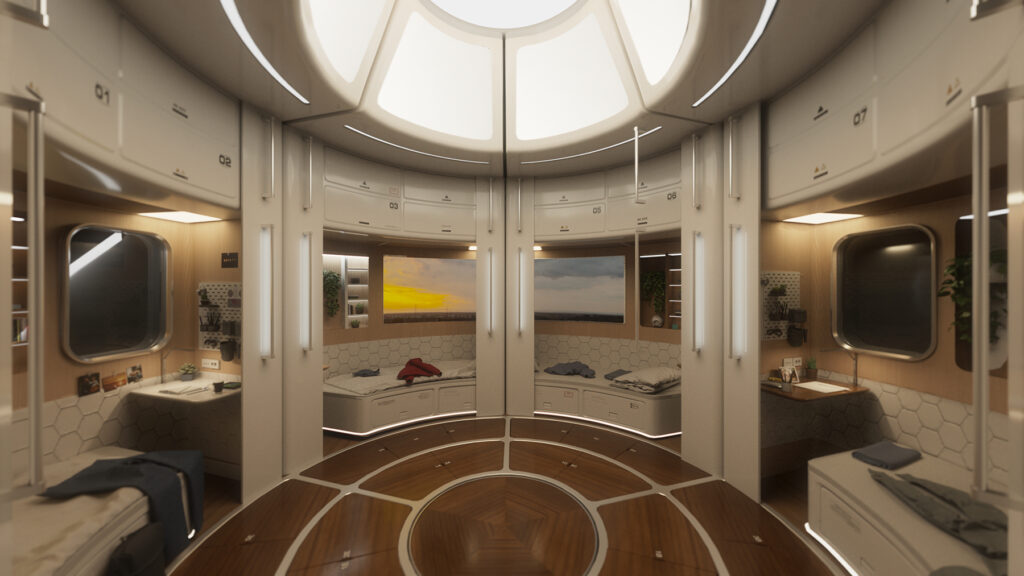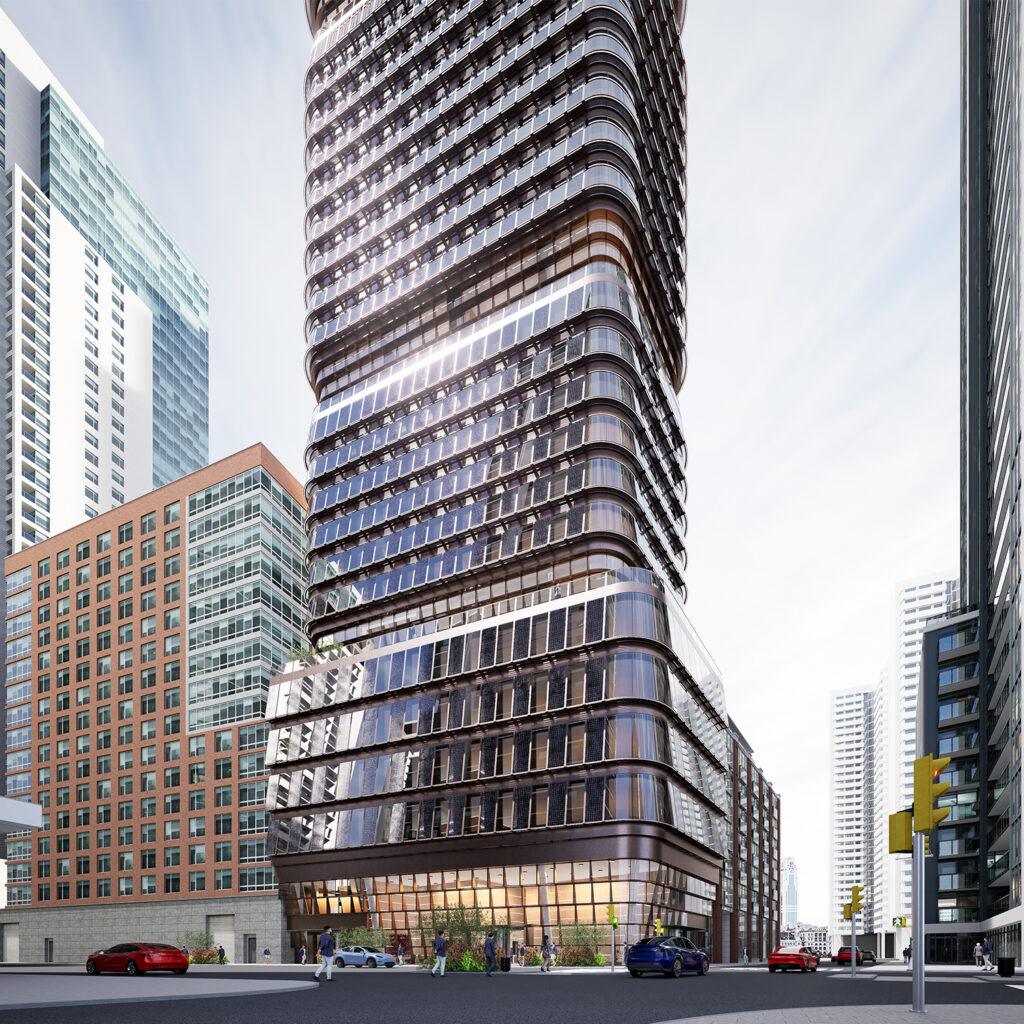As urban populations continue to grow, high-rise buildings and skyscrapers are increasingly becoming common living and working spaces. However, the design and management of these structures can significantly impact the health and wellbeing of their occupants. Understanding these impacts and how to mitigate negative effects while promoting positive outcomes is crucial for architects, planners, and building managers.
Indoor Environmental Quality (IEQ) is a critical component of building design, especially in high-rise buildings and skyscrapers where residents and workers spend a significant amount of time indoors. The quality of the indoor environment, including air quality, lighting, thermal comfort, and acoustics, greatly impacts on the mental health and overall well being of occupants.
Poor air quality inside high-rise buildings can lead to a range of health issues, from respiratory problems to increased stress levels and cognitive impairment. Contaminants such as volatile organic compounds (VOCs), particulate matter, and biological pollutants can accumulate in poorly ventilated spaces, aggravating issues like asthma, allergies, and other respiratory conditions. These health challenges can also lead to increased anxiety and stress among building occupants. Enhancing ventilation systems to ensure a continuous supply of fresh air and using air purification technologies can significantly improve indoor air quality and, by extension, occupant wellbeing (Heidari et al., 2017). The health of the occupants are directly impacted by these systems, but the psychological impacts are affected through strategies such as natural lighting and greenery.
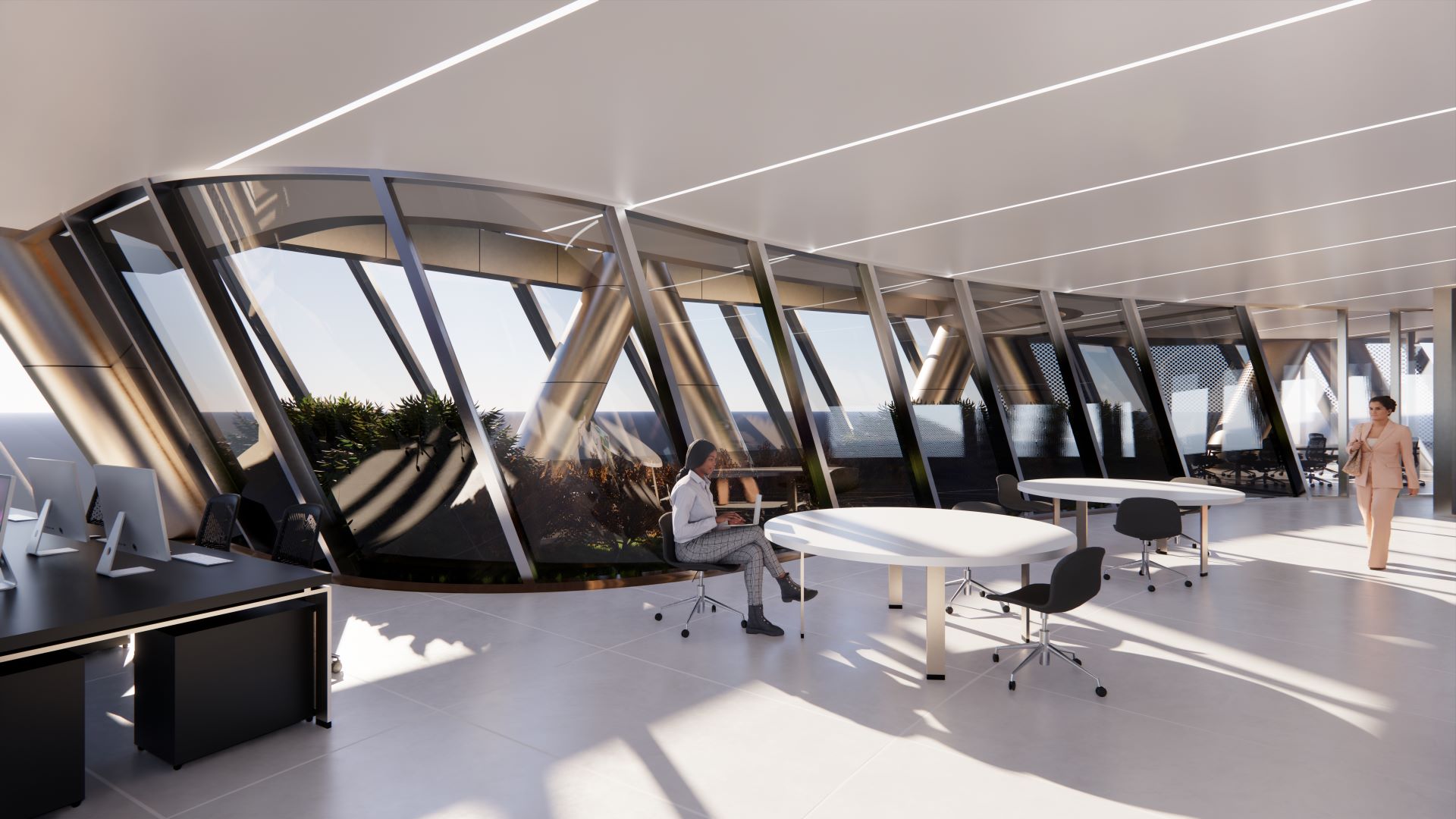
Natural lighting plays a crucial role in mental health. Access to natural light can improve mood, increase productivity, and maintain the natural circadian rhythms of the body, reducing issues such as seasonal affective disorder (SAD). In high-rise buildings, ensuring that design maximizes natural light exposure while minimizing glare through the strategic placement of windows and the use of reflective surfaces can enhance visual comfort and mental wellbeing. Additionally, well-designed artificial lighting systems that mimic natural light patterns can help in spaces where natural light is scarce, and skylights are a good example of this mimicry of sunlight from above. Natural lighting also can impact the heat of a building, adding to the importance of shading systems such as blinds and curtains which affect thermal comfort.
Thermal discomfort can lead to irritability, reduced concentration, and increased stress levels. High-rise buildings often struggle with maintaining consistent and comfortable indoor temperatures due to factors like high external wind loads and the heat island effect in urban areas. Implementing HVAC systems that allow for individual control and designing building façades that adapt to external weather conditions can help maintain a comfortable indoor environment that supports the mental health of its occupants. The design of a facade not only can impact thermal comfort, but also acoustic comfort as this is the direct separation from the indoor space to the outdoor space.
Noise pollution is a significant concern in urban high-rise environments. Constant exposure to traffic noise, construction sounds, and urban hustle can increase stress and disturb sleep patterns, leading to long-term mental health issues. Soundproofing measures such as double-glazed windows, sound barriers, and the strategic placement of internal spaces away from noise sources are essential for creating a quieter, more serene indoor environment conducive to mental health. However, it’s important to consider that these same indoor spaces feel natural in the way outdoor spaces would, a quiet and serene indoor environment should also bring a source of nature into it so occupants don’t feel isolated from outside greenery.
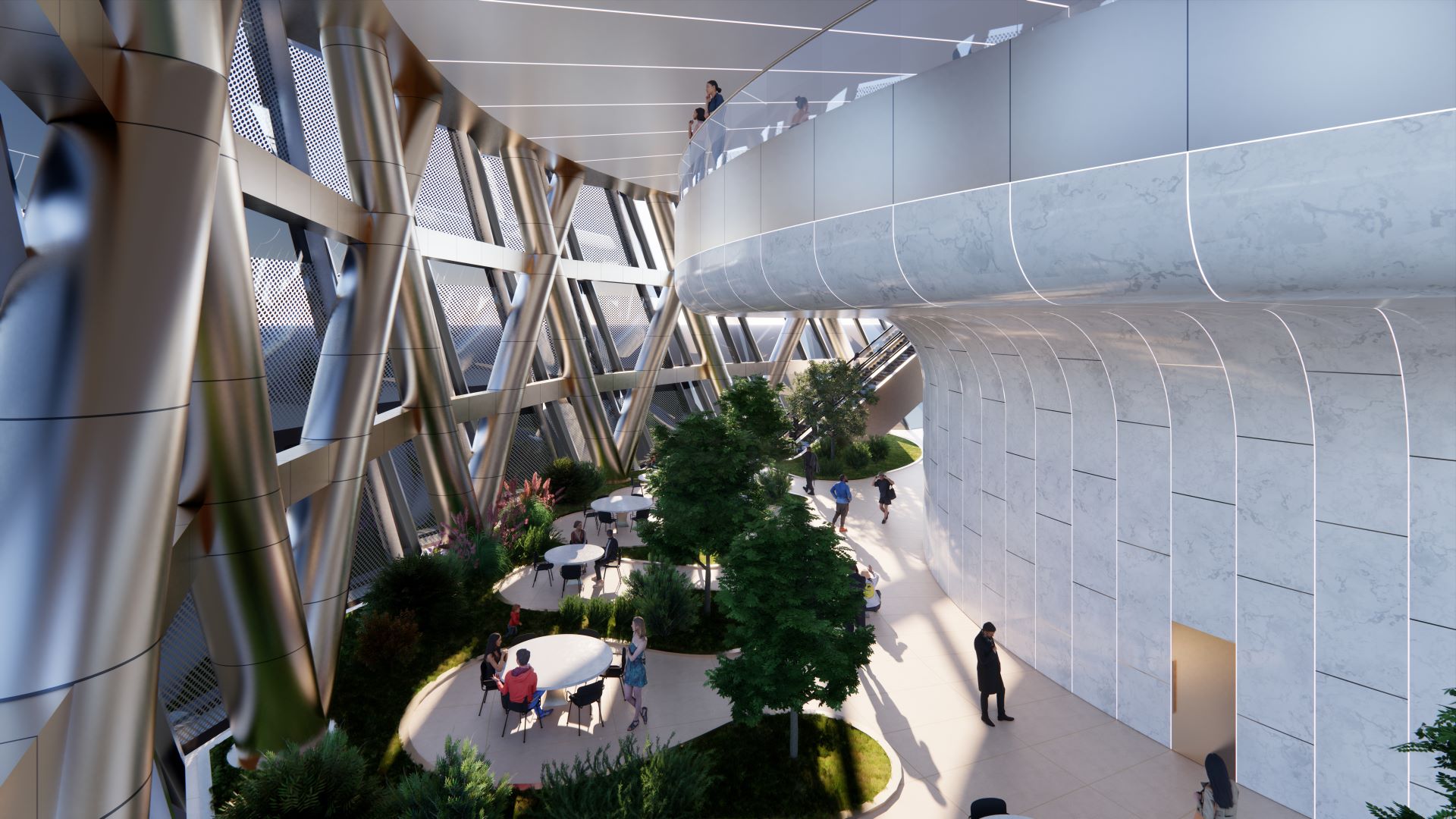
Incorporating green spaces and biophilic design strategies such as indoor gardens, atriums, and rooftop gardens in high-rise building design offers a dual benefit. It enhances indoor air quality by natural air purification and provides a restorative environment for building occupants to relax and rejuvenate, reducing stress and promoting mental wellbeing. By prioritizing these aspects of IEQ, architects and building managers can create high-rise environments that not only prevent mental health challenges but actively promote the mental and emotional wellbeing of everyone who lives and works in these spaces. However, a strong IEQ may be well created architecturally, but it is up to not only the managers, but also the occupants to maintain the environmental quality indoors.
High-performance buildings often incorporate advanced technologies and design strategies that are not immediately intuitive. For example, features like automated shading, lighting controls, and advanced HVAC systems require a certain level of user knowledge to operate effectively. Educating occupants about these features ensures that they are used properly and efficiently. Even effective training programs that engage occupants and make them active participants in managing their environment can lead to greater comfort and better building performance. Complimenting this idea, follow-up interviews and studies have shown that occupants who receive effective training are more likely to report higher satisfaction with their office environment, demonstrating the direct impact of education on comfort (Day & Gunderson, 2015).
Tailoring training sessions to the specific features and systems used in a building can help ensure that all occupants are well-equipped to use the building’s systems effectively. These sessions can include hands-on demonstrations, instructional videos, and easy-to-understand manuals. Then during use, implementing feedback systems where occupants can report their comfort levels and any issues with building systems can help facility managers and designers adjust training programs and building operations. This feedback loop not only improves the educational content but also helps in fine-tuning the building’s systems to better suit occupant needs.
Using technology such as mobile apps or interactive displays that provide real-time information about energy usage and environmental conditions will also educate occupants about the impact of their behaviour on building performance. Such technologies also offer tips and reminders for optimal usage of building systems. Occupant education should not be a one-time event but rather a continuous process. Regular updates and refresher courses can be provided to accommodate changes in building configurations or upgrades to systems. New occupants can also benefit from introductory sessions as part of their onboarding process.
Technology and building design have a clear effect on the way occupants interact with the building. We’ve seen how occupants in high-rise buildings should be educated to optimize building systems efficiency and how the design of naturally lit and green spaces enhance psychological impacts. However, the wellbeing of occupants is not limited to serene spaces and fresh air because physical activity and safety measures directly translate to occupants’ wellbeing in the long-term as well as the short-term. In high-rise environments, promoting physical activity involves both strategic design and active encouragement of healthful behaviours.
Architects need to encourage physical activity through strategic design as the impacts of physical activity in the long-term means occupants’ handle emergency procedures quicker and safer in those short-term situations.
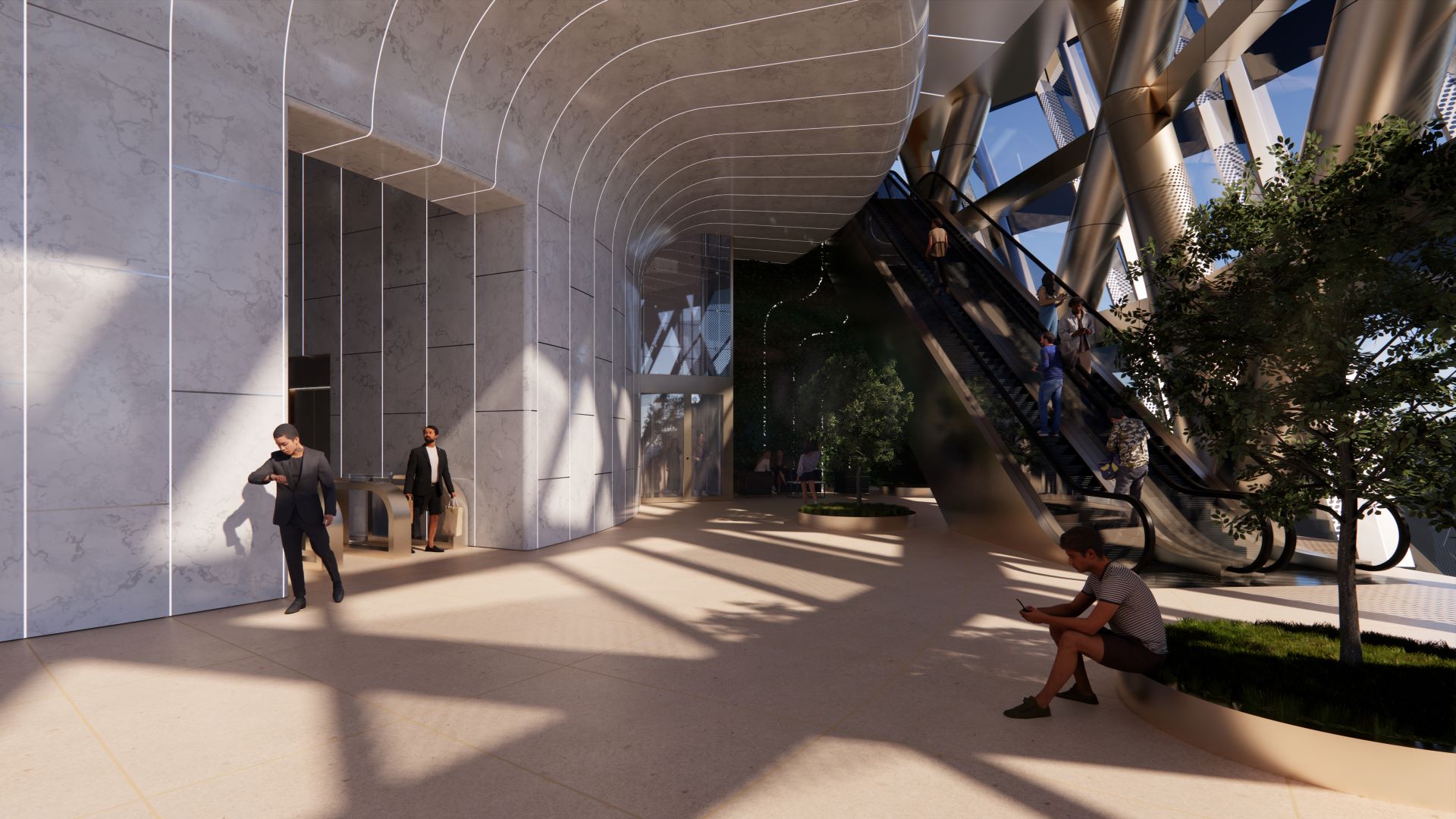
Enhancing the appeal and accessibility of staircases in high-rises can significantly encourage regular physical activity among occupants. Design strategies include making staircases more visually appealing, conveniently located, and better advertised with signage promoting their use over elevators for health benefits. This approach can reduce elevator congestion and promote health simultaneously (Zimring et al., 2005). To add to this strategy, incorporating fitness centers within high-rise buildings is proven to increase physical activity. These facilities should be conveniently located, well-equipped, and versatile to cater to a broad range of fitness activities. Access to on-site fitness resources makes it easier for residents and employees to integrate exercise into their daily routines, fostering a healthier lifestyle. However activity is not limited to these fitness areas, just like the use of stairs it is important to implement active design features that promote essential physical activity. For instance, wider, more attractive walkways, interactive art installations, and integration of technology that tracks and motivates physical activity can make movement a more integral part of daily life in a high-rise. This physical activity also enhances efficiency during safety procedures. Safety is a critical consideration in high-rise buildings, affecting everything from general occupancy to emergency responses.
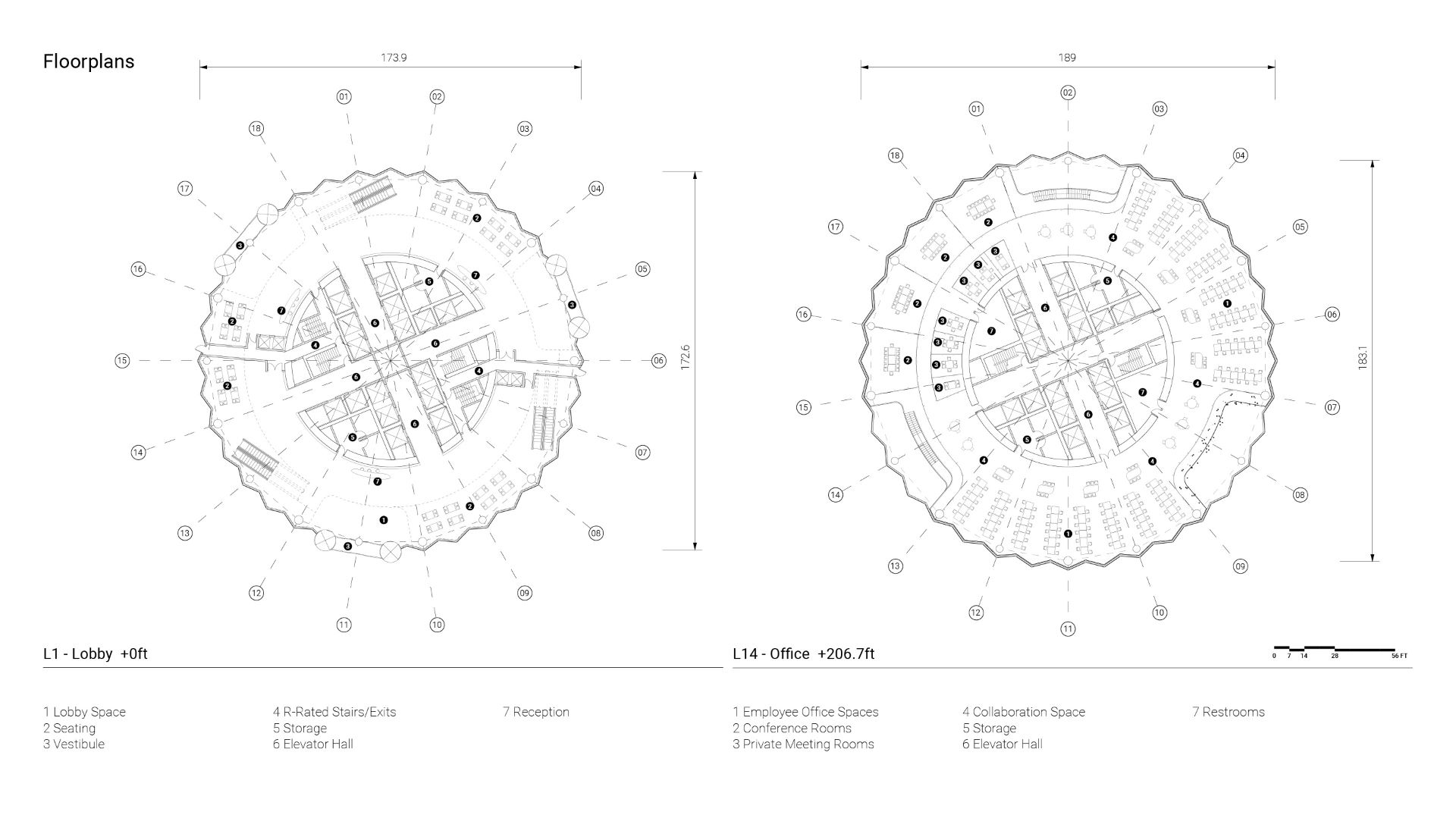
High-rise buildings pose unique challenges for fire safety due to their height and the potential difficulty in evacuating occupants. Advanced fire suppression systems, clear and well-practiced evacuation routes, and regular safety drills are essential. Innovations such as high expansion foam systems that can be delivered through elevator shafts to suppress smoke and fire can significantly enhance safety in these buildings (Degaev, 2019). Before fire safety however, the building must have an extremely well designed structural strategy.
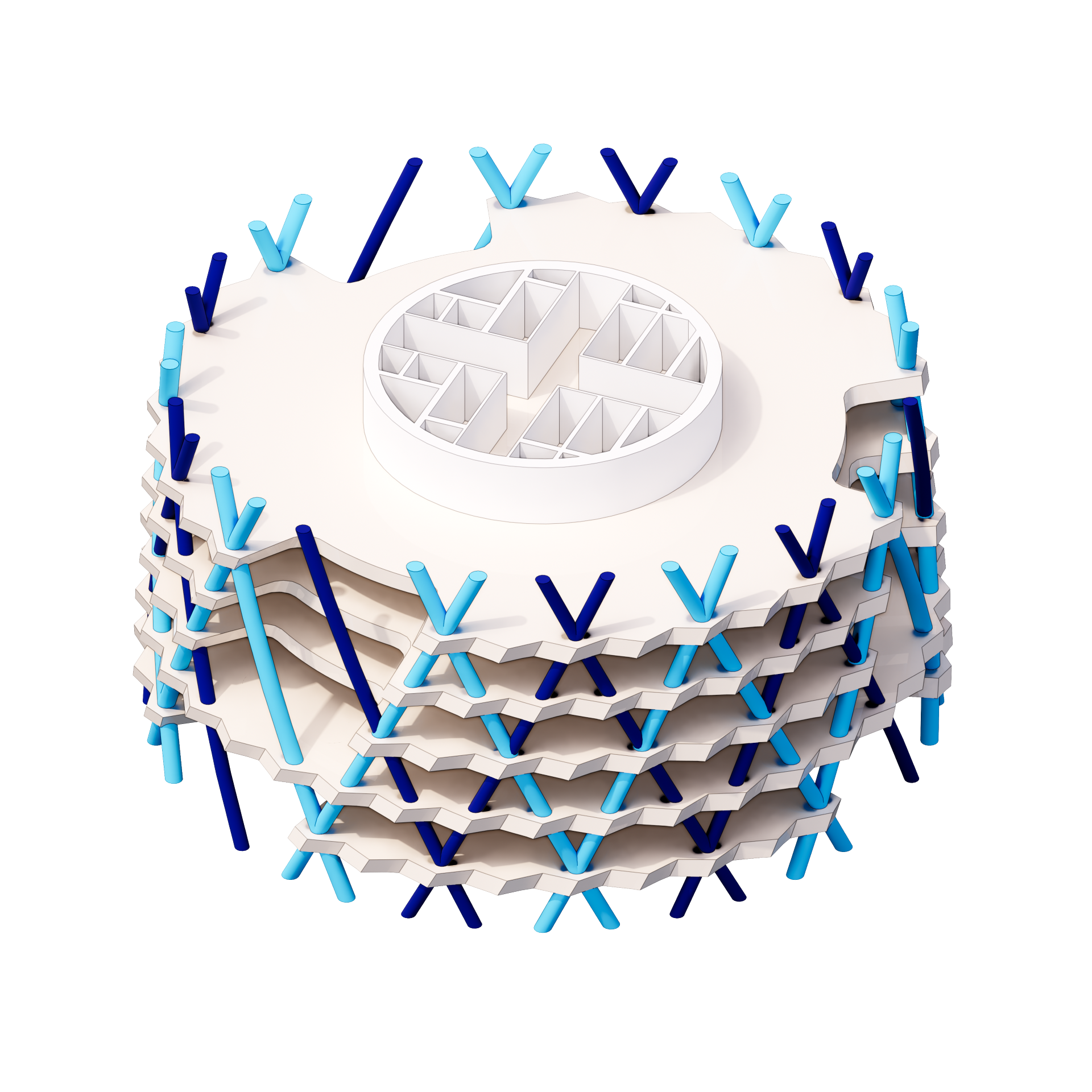
Ensuring the structural integrity of high-rises, particularly in areas prone to earthquakes, hurricanes, or other natural disasters, is vital. This involves using high-quality materials and adhering to the strictest building codes and standards to ensure the building can withstand such events. Internally the building must be secured from human disasters and be equipped with essential security measures.
Comprehensive security systems including surveillance cameras, secure entry points, and trained security personnel are essential to prevent unauthorized access and ensure the safety of all occupants. Well-lit pathways and common areas also contribute to a safer environment by reducing the risk of accidents and deterring crime. High-rises should be further equipped with medical emergency preparedness facilities, including accessible first aid kits, automated external defibrillators (AEDs), and training for staff on emergency response protocols. This ensures a swift and effective response in the event of a medical emergency.
By prioritizing these aspects of physical activity and safety, architects and building managers can create high-rise environments that not only promote a healthy and active lifestyle but also ensure the safety and security of all occupants. This comprehensive approach is essential for the development of modern, high-rise buildings that enhance the quality of life for their residents and users. The well-being of occupants must also be considered in the environment around the building, therefore architects must consider sustainable solutions for the environment to ensure occupants can keep enjoying the outdoors without pollution and have more sustainable spaces.
Sustainable design in high-rise buildings encompasses various strategies aimed at reducing environmental impacts while enhancing the health and well-being of occupants. Designing for energy efficiency is crucial in high-rise buildings due to their significant energy demands. This includes integrating high-performance building envelopes, efficient HVAC systems, and utilizing renewable energy sources. Building features such as double-skin facades, solar panels, and advanced insulation techniques can drastically reduce energy consumption while maintaining comfort levels (Rafiei & Adeli, 2016).
Sustainable high-rise buildings also focus on water conservation techniques, including rainwater harvesting, water recycling systems, and the use of water-efficient fixtures. These systems help reduce the overall water footprint of the building and ensure that the building can operate sustainably in regions with water scarcity issues. Even more so, the architecture itself must consider the materials it is using. Selecting materials that are sustainable, such as recycled, recyclable, or sourced from responsible suppliers, minimizes the environmental impact of the building’s construction and operation. Low-VOC (volatile organic compounds) materials also contribute to better indoor air quality, enhancing the health of the occupants (Feng Qian, 2012).
A health-focused design considers both the environmental impact and the direct impact on the occupants’ physical and psychological well-being. Designing for all age groups and abilities is a key aspect of health-focused design. This includes providing easy access for disabled individuals, creating family-friendly spaces, and ensuring that the building is navigable and comfortable for all users. Open spaces should be created both indoors and outdoors, and having outdoor spaces open to public use is a great way to engage the community surrounding the building.
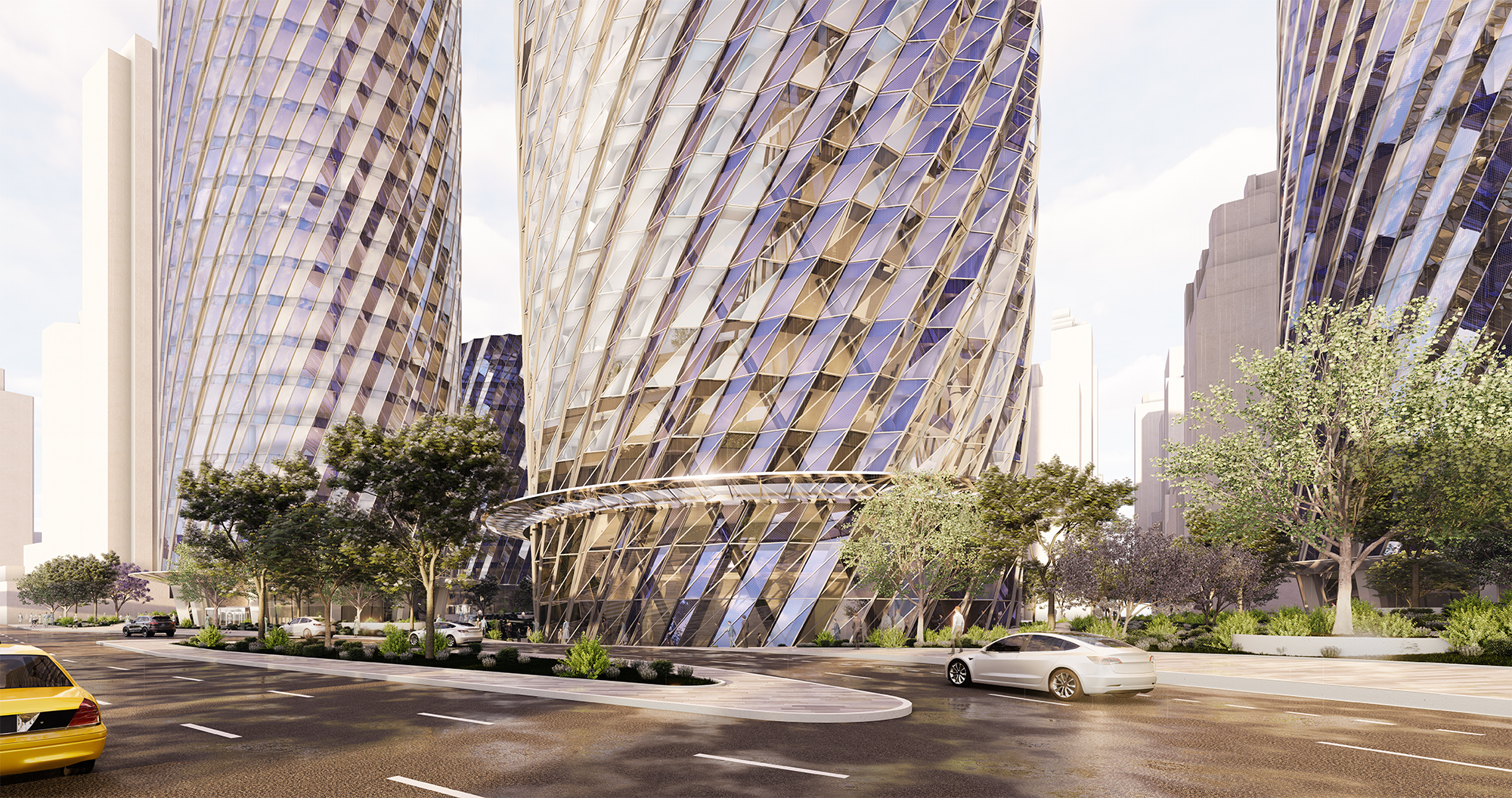
High-rise designs that include communal spaces for interaction, private areas for relaxation, and facilities for physical activities can help in reducing feelings of isolation and promoting a sense of community among occupants. These design features are essential in urban environments where space is often limited and can be isolating. The integration of these sustainable and health-focused principles in high-rise building design not only promotes a better quality of life for its occupants but also ensures the building contributes positively to the broader urban environment. This holistic approach to architecture is essential for the development of future cities that are not only efficient but also supportive of human health and well-being.
References
Heidari, L., Younger, M., Chandler, G., Gooch, J., & Schramm, P., 2017. INTEGRATING HEALTH INTO BUILDINGS OF THE FUTURE.. Journal of solar energy engineering, 139 1. https://doi.org/10.1115/1.4035061.
Day, J., & Gunderson, D., 2015. Understanding high performance buildings: The link between occupant knowledge of passive design systems, corresponding behaviors, occupant comfort and environmental satisfaction. Building and Environment, 84, pp. 114-124. https://doi.org/10.1016/J.BUILDENV.2014.11.003.
Zimring, C., Joseph, A., Nicoll, G., & Tsepas, S., 2005. Influences of building design and site design on physical activity: research and intervention opportunities.. American journal of preventive medicine, 28 2 Suppl 2, pp. 186-93 . https://doi.org/10.1016/J.AMEPRE.2004.10.025.
Degaev, E., 2019. Operational safety of high-rise buildings. E3S Web of Conferences. https://doi.org/10.1051/e3sconf/201913503037.
Rafiei, M., & Adeli, H., 2016. Sustainability in highrise building design and construction. The Structural Design of Tall and Special Buildings, 25, pp. 643 – 658. https://doi.org/10.1002/tal.1276.
Qian, F., 2012. Analysis the Healthy High-Rise Residential Based on the Sustainable Concept. Advanced Materials Research, 524-527, pp. 3735 – 3740. https://doi.org/10.4028/www.scientific.net/AMR.524-527.3735.
Allen, J., MacNaughton, P., Laurent, J., Flanigan, S., Eitland, E., & Spengler, J., 2015. Green Buildings and Health. Current Environmental Health Reports, 2, pp. 250 – 258. https://doi.org/10.1007/s40572-015-0063-y.[/vc_column_text][/vc_column][/vc_row]

